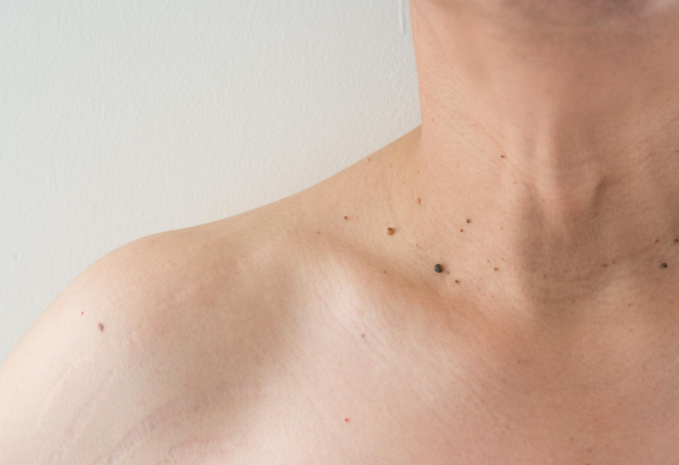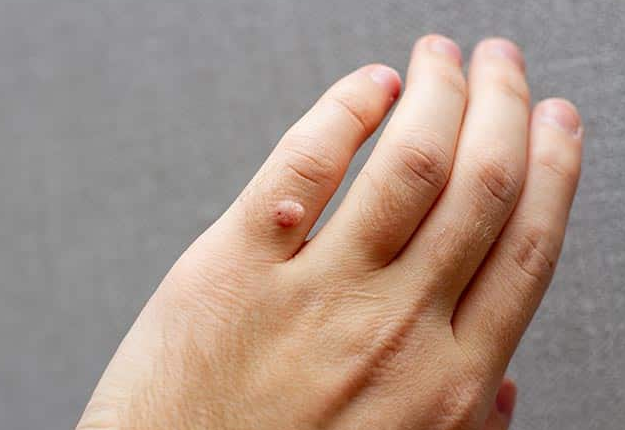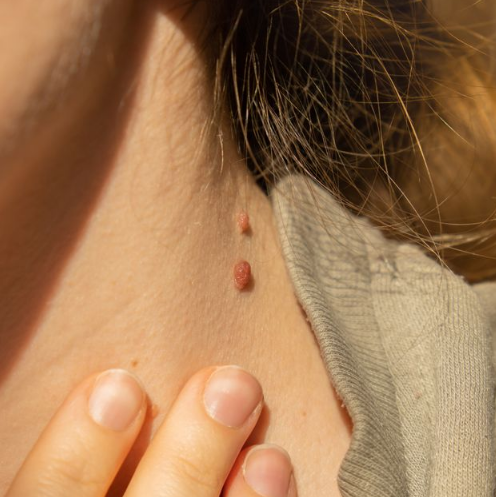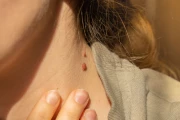Have you ever noticed a small, fleshy growth on your skin and wondered if it's a wart or a skin tag? While they may look similar, these two skin conditions are actually quite different. Warts are caused by a virus and can be contagious, while skin tags are harmless and typically painless. But how can you tell the difference and what's the best way to treat them? Today we will explore the key differences between warts and skin tags, as well as some effective treatment options to help you get rid of them for good. So, let's dive in and learn more about these common skin conditions!
Wart vs. Skin Tag: What Are They?
Various strains of HPV lead to warts with distinct distribution patterns and physical characteristics. For instance, common warts, associated with HPV 2, 4, 27, and 29, exhibit a classic appearance, appearing singularly or in groups anywhere on the skin. Genital warts, linked to high-risk HPV types like 16 and 18, can grow large with jagged edges, resembling cauliflower fragments. Filiform warts may be challenging to differentiate from skin tags, as they also appear in skin folds and have an elongated appearance with a stalk. The usual culprits behind filiform warts are HPV subtypes 1, 2, 4, 27, and 29. Wart sizes vary, ranging from a few millimeters to several centimeters, depending on the viral strain and patient factors.
Skin tags, also known as "acrochordons," are soft outgrowths attached to the skin surface by a stalk. Found in skin folds like armpits, neck, and eyelids, these areas of friction may host solitary or multiple lesions. Skin tags consist mainly of loose connective tissue and blood vessels, with sizes ranging from one to five millimeters, occasionally reaching up to two centimeters. Typically skin-toned, brown, or pinkish-red, they are painless and non-itchy. However, inflammation or infection may occur after a botched removal attempt or traumatic contact with clothing or jewelry, leading to these symptoms.
Wart vs. Skin Tag: What’s The Difference?
There are some big and small difference which i’ll help you to understand ahead:
Let’s start from the cause of both, well warts usually occur because of HPV infection while skin tags causes are mostly unknown or its genetic most of the time. So how dangerous and contagious warts and skin tags are? Warts are contagious but skin tags aren’t. About the surface and texture of them? Skin tags surfaces are usually smooth and soft while warts have quite rough surfaces depending on how deep it is. While so many people get afraid of the fact that they grow with time, my dears relax. It doesn’t grow in both conditions, I will not say that it will not grow at all but it will not be abnormal Melanocyte growth at all. The colors these issues have are similar as both of them are pinkish red, skin-toned, or brown in colors. I hear this alot, where exactly do they grow most? Well, we cannot predict the location but we can tell how they can be, so the skin tags mostly skin folds while Warts location depends on where your skin is most dry and where you have the HPV stain. The last and the most asked question, what’s the common age of getting these issues? There is no limit but skin tags are mostly common around middle adults to aged people, while warts always get everyone especially those who have poor immunity, so take good care of cleanliness of your skin so you don’t face these issues.
Wart vs. Skin Tag: How To Treat Them?
Let’s see how we can get rid of them:
How To Get Rid of Warts?
Warts may vanish on their own within 2-4 years for those with robust immunity, but swift examination and removal are advisable. Beyond being contagious, they become more challenging to treat over time. Additionally, high-risk HPV strains can lead to skin, mucosal, and internal organ cancers.
At Home Treatments
- Salicylic acid: This hydroxy acid exfoliates thickened wart skin.
- Topical retinoids (tretinoin and acitretin): Vitamin A-like drugs correcting abnormal skin growth.
- Virucides (glutaraldehyde and formaldehyde): Agents deactivating the wart virus and aiding lesion removal.
- Imiquimod: An immune-enhancing drug for genital warts.
- Podophyllin: Suppresses abnormal skin growth on genital warts.
In-Office Treatments
- Cantharidin: A drug applied to kill and dry up abnormal skin cells.
- Cryotherapy: Freezing with liquid nitrogen.
- Electrosurgery and curettage: Cauterization followed by surgical removal.
- Simple excision: Surgical removal with scissors or blades.
- Laser surgery: Burning with laser beams.
- Bleomycin injection: Injecting an immune-enhancing drug.
- Radiofrequency: Burning with radio waves.
- Photodynamic therapy: Application of light-sensitizing drug followed by exposure to high-energy light.
Between at-home and in-office treatments, the latter is proven safer and more effective. At-home remedies depend on patient compliance, while in-office procedures are performed by licensed professionals adhering to standard protocols.
How To Get Rid of Skin Tags?
While skin tags are typically a cosmetic concern, some may grow large enough to cause discomfort or impact crucial functions like vision or eyelid movement. They can bleed or become inflamed when caught between clothing and jewelry, and rare features like abnormal pigmentation or rapid growth may raise concerns about skin cancer. In any of these cases, it's advisable to consult a healthcare provider for examination and appropriate treatment. Attempting self-removal is risky, as it may lead to excessive bleeding, infection, and potential long-term complications such as scarring and painful nerve growths known as "neuromas."
Skin Tag Treatments:
- Simple excision: Surgical removal with scissors or blades.
- Cautery: Using radiofrequency or electrosurgery to burn the skin tag.
- Cryosurgery: Freezing with liquid nitrogen, causing the outgrowth to fall off spontaneously.
- Laser treatment: Using powerful light beams to target the lesion or its blood supply.
These procedures are typically made painless by the application or injection of numbing medication. Currently, there are no scientifically-proven topical treatments for these lesions.
Conclusion
Warts vs. Skin Tags have been the most asked question, so we researched and created the perfect guide for you all to understand what you are facing and how you can get rid of it. These common skin issues are easily gotten by those people who don’t take care of their skin and body that often which leads to so many infections and other moles.














